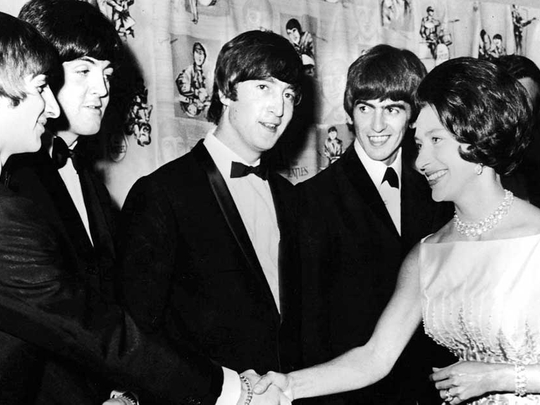
Craig Brown says he was prompted to write Ma’am Darling: 99 Glimpses of Princess Margaret (4th Estate ) by the fact that his subject appeared in the indexes of so many other biographies. While her sister could make claims to be the most famous leading lady alive, Margaret was assigned a character part in the second half of the 20th century, the snobbiest and most spendthrift poor relation in any town.
Brown does not attempt a beginning middle and end of the princess’s life, rather he aims to ask the questions that perhaps plagued her: “Why is she in all these diaries and memoirs? What is she doing there?” His answer, offered in 99 perfectly pitched vignettes, is consistently hilarious and eye-opening.
Inevitably, the princess has a small but telling role in what Tina Brown describes as her “madcap”, “supercharged” personal history of late 20th-century fame, The Vanity Fair Diaries, 1983-1992 (Weidenfeld & Nicolson). When “Queen Tina” took charge of Tatler with little experience aged 25, her soon-to-be husband, Sunday Times editor Harry Evans, gave her a crash course in picture layout. The photo he demonstrated on — a tight crop of Princess Margaret dancing in Mustique with Colin Tennant — gave Brown her first scoop. At Tatler and at Vanity Fair, Brown staked a claim to have invented modern celebrity by making gossip news. That dubious boast would be contested, however, by Jann Wenner, founding editor of Rolling Stone magazine. Joe Hagan’s biography of Wenner, Sticky Fingers (Canongate), is as obsessive and self-involved as its subject (who commissioned it, then disowned it), but as a chronicle of those testosterone- and cocaine-fuelled “purple decades” in which journalism aspired to the condition of rock’n’roll, it makes compelling and sobering reading.
Anthony Powell once observed that “It is not what happens to people that is significant, but what they think happens to them.” You might say that the best biography occurs in the space between those two versions. Hilary Spurling was appointed biographer to Powell nearly 40 years ago, on the understanding she would leave it as long as possible to put pen to paper (the author of the 12-volume A Dance to the Music of Time knew all about playing the long game). Spurling’s Anthony Powell (Hamish Hamilton) is worth the wait; intimate and judicious, it doubles as an alternative history of a lost kind of Englishness.
One of the lessons of Powell’s 94 years is that writers are capable of glorious second and third acts — he did not start his life’s work until he was 45. Politicians are generally less lucky in this regard. There is a tragic cast to the two major political memoirs of this year. Gordon Brown in My Life, Our Times (The Bodley Head) proves himself wise on almost every subject but himself.
He comforts himself with the notion that he was simply not suited to the modern desire for “celebrity politicians”, that his ego wasn’t up to it. For all the false modesty of that position, it is hard not to feel a sense of nostalgia for the genuine seriousness of his analysis of political realities. There is an even sharper sense of might-have-beens in Hillary Rodham Clinton’s What Happened (Simon and Schuster). You come away from her memoir feeling the title lacks a expletive and half a dozen question marks.
Chroniclers of other people’s lives do not always make the best memoirists, but there are exceptions to that rule.
Armistead Maupin made his name with the episodic revelations of San Francisco’s gay culture before and after Aids in Tales of the City. His own coming out is the memorable epiphany of Logical Family (Doubleday), the story of how he overcame the bigotry of blood relations to forge an alternative loving community.
Plot 29 (4th Estate), by Allan Jenkins (editor of the Observer’s food magazine), is a no less affecting story of grafting and regrowth. Jenkins’s diary of a gardening year, at his north London allotment, is the occasion for digging down into a childhood in which he was taken into care and given up for adoption. The long shadow that trauma cast becomes dappled and partly redeemed by the lessons of the seasons.
Claire Tomalin, celebrated biographer of Charles Dickens and Samuel Pepys and Thomas Hardy, knows all about the light and shade of human experience. In A Life of My Own (Viking) she quietly turns her brilliant, careful intelligence to the love and loss she has experienced in her own 84 years.
The unfathomable shocks of the death of her first husband, Nick Tomalin, killed in Israel while reporting, and of her beloved daughter Susanna who took her own life while a student at Oxford, are conveyed with clear-eyed honesty. And they are set against her knowledge of how “very lucky” she has been to “find happiness as well as tragedy”. There is a truth to every chapter of her recollection; she takes her lead from her hero, Samuel Pepys, who “never pretended that he felt as he should, or behaved better than he did”.
–Guardian News & Media Ltd









